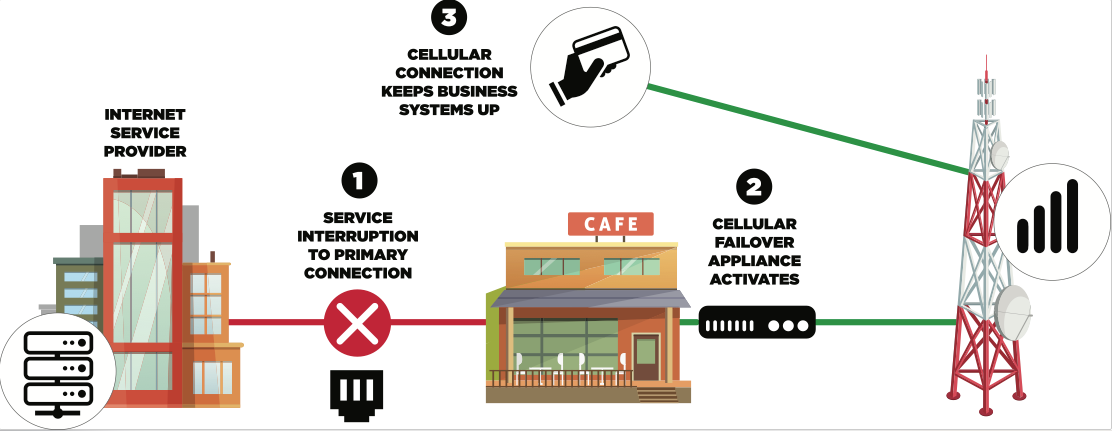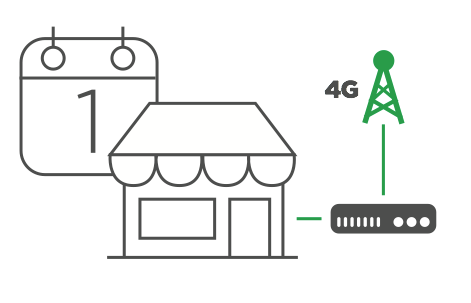Estimated reading time: 2 minutes
It’s a nightmare scenario for business owners. The point of sale system stops working, and your customers are forced to inform customers that they must pay in cash.
If they choose, they could instruct your staff to manually write down credit card numbers, but this exposes the business to huge liability issues due to non-PCI compliance. From there, the only other option for end-users is to regretfully tell customers they need to go elsewhere to make their purchases, costing your customers money and running the risk of angering loyal customers.
Luckily, there’s a way to prevent this debacle – it’s called cellular failover. And offering this technology to end-users can be the difference between financial loss and gain.

Cellular failover is network connectivity redundancy for businesses – a life jacket of sorts that keeps a business afloat when the primary wired internet connection is lost. It works on the same technology (4G LTE) that your smartphone works on anytime you aren’t on your home Wi-Fi.
It’s a “metered connection” meaning users are paying per unit of data. However, it can be deployed for around $15/month with the cellular carrier of the end user’s choice and can allow for enough data to run thousands of POS transactions while the primary internet connection is being fixed. Failover can also be deployed with removing any existing equipment. Customers can simply plug the failover routing appliance (with a SIM card from their carrier of choice) into an existing router and the solution is ready to go.

Routers with cellular failover enable internet connectivity even before hardwires can be run.
For new businesses, a router with cellular failover capability will also offer what’s referred to as Day 1 Internet. This term refers to the ability to connect to the internet on day one using a cellular failover connection to get the business up-and-running before a local internet service provider is able to come out and activate the wired primary internet connection.
But do your customers need the guarantee of cellular failover?
Probably. In most cases, a primary internet service provider may offer businesses up to 99.5 percent uptime. This seems pretty reliable on paper, but what it also means is that there are up to 4 hours of downtime per month to which your customers’ business could be exposed. And when every hour of downtime can cost an organization critical revenue in sales lost and loyalty damaged, it may not be a risk your customers can afford to take.
Technology moves fast in today’s world – for the sake of your customers, you have to be just as fast. Networking solutions like failover have been around for quite some time now, and if you aren’t carrying it now, you’re already behind your competitors. The longer you’re behind, the further ahead others will get – it’s crucial to begin onboarding this kind of technology, as it becomes the foundation for an entire new vertical of technologies. As many different industries begin to implement tablets, mobile devices, cloud computing and other new forms of IoT-connected technologies, routers with failover can help to keep the entire system connected during downtime.

